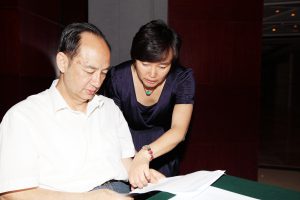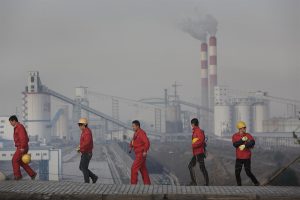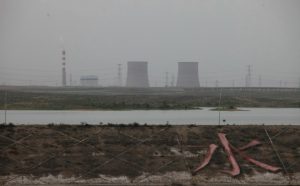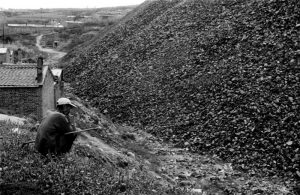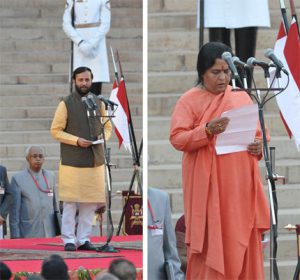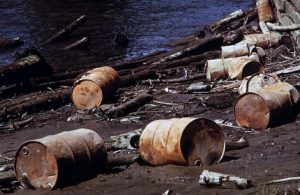China’s biggest coal firm, Shenhua, has been forced to commit to changes in its operations in Inner Mongolia after sustained pressure from Greenpeace, in what has been described as a model for civil society action in support of the environment.
In April 2014, the local government announced that Shenhua would stop pumping groundwater over the course of the year. Since pumping started in 2006, the grassland in the region has seen falling groundwater levels, decreasing vegetation, and the destruction of sand dunes.
Shenhua’s coal to liquid fuel plant in Ordos, in Inner Mongolia, became the subject of scrutiny in 2012, when Greenpeace published its “Thirsty Coal” report, detailing how expanding coal chemical operations in the west of China were competing with locals and the ecology for water resources.
During this period, another Beijing-based NGO, the Centre for Legal Assistance to Pollution Victims, got involved in the case. Hu Shaobo, one of the lawyers on the team, said that “legally speaking I wasn’t very optimistic.” Article 55 of the recently revised Civil Procedure Law allowed for public interest environmental litigation, but there were no detailed rules on how it should be done, he said.
Hu’s assessment turned out to be accurate. Both Beijing’s Dongcheng District People’s Court and the Inner Mongolia Intermediate People’s Court refused to hear the case.
Part of the problem for Greenpeace was finding experts willing to make environmental-impact assessments, as most didn’t dare speak out for fear of reprisals. But in mid-July 2013, Hu and another lawyer accompanied Xie Yan, a researcher at the Chinese Academy of Sciences’ Institute of Zoology, and another scientist employed by a State Forestry Institute, on a trip to Ordos.
According to Xie, “It’s very hard to carry out environmental investigations in cases like this, so we experts should help out and provide scientific support.” In their environmental impact assessment, Xie and the others said: “We believe waste-water dumped by Shenhua CTL near the plant may pollute the soil, and that pumping has led to a significant drop in groundwater levels.” Their conclusion was echoed by Greenpeace’s report that appeared at the end of July 2013.
The giant responds
Shenhua arranged an urgent meeting with Greenpeace the afternoon that the report was launched. In an interview with the newspaper Southern Weekend, Zhang Jiming, president of Shenhua’s Coal to Liquid and Chemical Company, recalled that “there were disagreements within Shenhua after that first meeting".
“They aren’t our superiors, or law enforcement, or the media," Zhang said. "Is there any need for us to keep talking? After consideration we decided to communicate via Greenpeace what we’d done, what the problems were and what further action we were going to take.”
After that meeting, Shenhua dispatched its own investigators to Ordos and in August 2013 provided an explanation of the company’s groundwater extraction and its environmental impact, as requested by Greenpeace. Eight days later, again in response to Greenpeace requests, it provided another document on its release of waste-water.
Accused of over-extraction of ground water, illegal dumping of waste-water and damaging the grasslands environment, Shenhua admitted that there was "no doubt" extraction of groundwater harmed the environment, that groundwater levels had fallen at five out of 22 pumping stations, and that vegetation coverage had reduced – but rejected Greenpeace’s claim that this was due to Shenhua’s water extraction.
On the most crucial matter, excess groundwater extraction, Shenhua responded that “no actual excess extraction of groundwater was found, either in legal or technical terms.”
According to data provided by Shenhua, in the six years from 2006, when trial operations started, to 2012, the CTL project extracted an average of less than 20,000 cubic metres of water per day, “less than the permitted amount” of 36,000 cubic metres for which it is licensed, and much less than the 80,000 cubic metres surveys have judged an acceptable level."
After Greenpeace published both text and images exposing illegal dumping of waste-water, Shenhua pointed out that in April 2013, prior to publication of the report, it had been fined by the environmental authorities and ordered to make changes. However it denied deliberate pollution, saying that the water was “stored temporarily” due to technical problems.
Zhang Jiming explained that Shenhua had, in accordance with the demands of the environmental authorities, treated and reused the three to four thousand tonnes of waste-water, at a cost of 120 yuan per tonne. The pond bed was then cleaned and restored to its former appearance.
Despite Shenhua’s efforts, Greenpeace was unconvinced. Shenhua was asked to explain why that temporary storage was in place for over two years and why the pond was not sealed. Nor was there an explanation of why the waste-water was found to be in breach of pollution standards, and whether or not use of that temporary storage pond was included in the environmental-impact assessment report.
Zhang also claimed to be surprised that Greenpeace found several pollutants, including aromatic hydrocarbons and phenol in that water. As with other industrial operations, Shenhua only carried out three tests: chemical oxygen demands, ammonia and phosphates. “We were shocked they found it, and we’re going to continue testing for aromatic hydrocarbons,” said Zhang.
Greenpeace’s investigation finally bore fruit in April 2014, when the local government told herders living near water sources in Haolebaoji Township that they would be paid 20,000 yuan (US$3,200) per person, plus 20,000 per household, as compensation for loss of water resources to industry, to be paid over three years. It was also confirmed that Shenhua’s pumping stations were to be shut down. However, Zhang Jiming said that a simplistic view of this as an “NGO victory” devalues a change arising out of a hard-fought negotiation between the two sides.
The villagers in the region are also more cautious about the verdict. A representative for some of the herders recalled that, since Shenhua installed pipes in 2005, the Wushen Banner government has twice proposed a wholesale relocation of the herders, but it has never happened. Apart from annual compensation paid by the local government of 8,000 yuan (US$1,280) a year from 2012, none of the promises made to the herders by the local government has been kept.
The herders don’t believe the pumps will stop running in the near future, and not simply because it will be hard to quickly find an alternative source of water. They are sure that the government, from the provincial-level downwards, will do its best to figure out how Shenhua can keep pumping groundwater: according to a 2010 article on a local official website, the Ordos government had to fight to get the Shenhua CTL project, and one of the promises made to win that fight was to supply plenty of water.
This is an edited version of an article originally published by Southern Weekend
